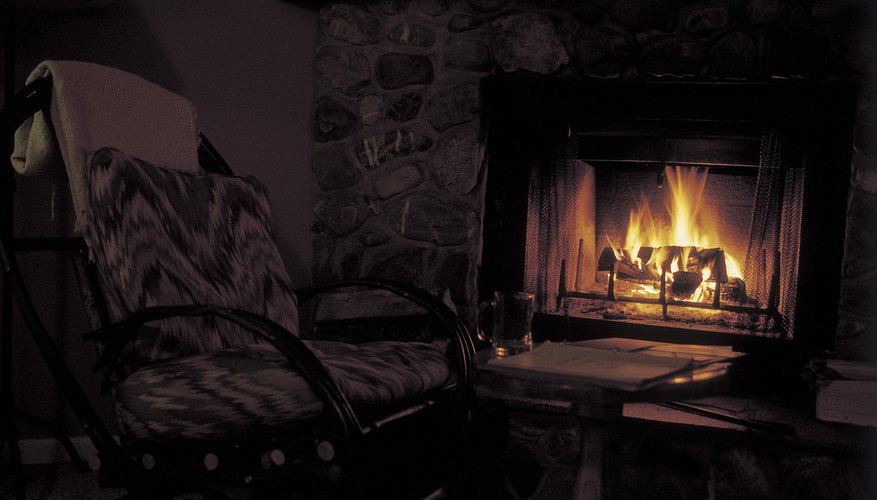Modern electric fireplaces display all the visual characteristics of a gas or wood burning hearth, including flames dancing over logs and the emission of faux smoke. However, in the UK, the operating cost of an electric fireplace is more than double that of a gas fireplace. Nevertheless, there is always a slight chance of leakage from a malfunctioning gas-fired appliance. For those concerned with this factor or wishing to replace an outdated fireplace, changing from gas to an electric hearth is a straightforward process.
Removal
Close the gas supply shut-off valve at the meter. Turn off the mains electrical supply at the household electrical panel. You will only need to turn off the electricity if there is an electric igniter fitted to the gas fireplace.
Remove the fireplace surround and/or glass door if these components are attached directly to the wall. Slide the gas fireplace insert out of the cavity.
Withdraw the fireplace insert from the wall opening. Disconnect the flexible gas pipe union leading from the fireplace to the pipe jutting out the cavity side wall as follows: Grip the pipe with a pair of channel pliers and undo the union with an adjustable spanner.
Clean out all plumber's dope from the threads on the pipe jutting out of the wall. Use a wad of steel wool and a brass bristle wire brush for the best results.
Unroll a short length of yellow Teflon plumber's tape from the roll. Place the end on the pipe with the tape facing to the right and hold it with your left thumb. Wind the tape in a clockwise spiral around the threads while stretching it so that the tape settles into the thread profile. Stretch the tape to break it off and smooth the ragged ends into the threads.
Thread a black gas pipe cap clockwise onto the pipe. Grip the pipe with one pair of channel pliers and use a second pair to tighten the cap firmly. Do not over-tighten.
Prepare a 50/50 mixture of dishwashing liquid and water in a small container and turn on the gas supply valve at the meter. Apply a liberal amount of the soapy mixture to the gas cap threads with a 12 mm paintbrush. If bubbles appear, tighten the gas cap a quarter turn further and retest. Relight the pilots on the water heater and any other gas fired appliances in the household.
- Close the gas supply shut-off valve at the meter.
- Slide the gas fireplace insert out of the cavity.
- Prepare a 50/50 mixture of dishwashing liquid and water in a small container and turn on the gas supply valve at the meter.
Remove the electrical junction box cover from the wall with a screwdriver and disconnect the wires leading from the gas fireplace if applicable. Follow the instructions that came with the package and install a BS 1363 standard Type G fused wall outlet. If the gas fireplace had no electrical supply, have a certified electrician install a new outlet in the cavity.
Measure the height and width of the fireplace cavity. Purchase an electric fireplace insert of your choice sized to fit accurately into the cavity.
Installation
Clean out the cavity and follow the levelling procedure in the fireplace installation manual. Most fireplace inserts require positioning a long spacing shim on the cavity floor to support the bottom of the appliance.
- Clean out the cavity and follow the levelling procedure in the fireplace installation manual.
Plug the power cord into the wall outlet. Restore household power and switch the plug on. Slide the fireplace in flush with the wall while keeping the power cord from being trapped under the unit.
Install the fireplace surrounds and glass door if applicable. Turn on your new fireplace to ensure that everything is working properly.
TIP
If bubbles show up when testing the gas cap for leaks, remove the cap and cut off the pipe at the base of the threads with a pipe cutter. Rethread the pipe end with a plumbers stock and die, install a new gas cap as described, and repeat the bubble test for leaks.
